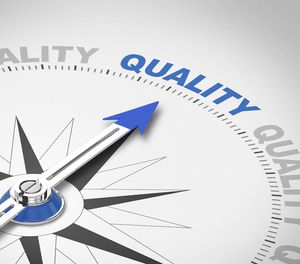KANBrief 1/19

The "New Approach" adopted in the 1980s has characterized the European Single Market ever since. Much of European legislation covered by it sets out only essential requirements. This legislation leaves it to the standards organizations – private-sector bodies acting, until recently, largely under their own responsibility – to support these essential requirements with harmonized standards that could be updated more frequently, but are not binding. In recent years however, the EU has departed from this basic principle.
Since 2012, the EU has intervened in standardization activity with Regulation (EU) No 1025/2012 (the Standardisation Regulation). This regulation governs the cooperation between European standards organizations, national standards organizations, the Member States and the European Commission. The European legislator's intention with the regulation was partly to facilitate participation by certain stakeholders in standardization activity, and to improve the suitability of harmonized standards for giving rise to the presumption of conformity. A radical part of the Standardisation Regulation is Article 10(5). This article obliges the Commission to review, in conjunction with the European standards organizations, whether harmonized standards are consistent with the underlying standardization mandate.
This is closely related to a judgement by the European Court of Justice of 27 October 2016 (Case C-613/14 James Elliott Construction/Irish Asphalt). The court ruled, partly on the basis of this article, that it is responsible for interpreting not only legal texts, but also harmonized standards under the former 89/106/EEC Construction Products Directive. Since then, the European Commission has considered itself obliged, over and above the requirement of Article 10(5) of the Standardisation Regulation, to share responsibility for the suitability of the technical content of harmonized standards and their compliance with the standardization mandates – and not only for construction products, but for all sectors falling within the New Approach. Consequently, should it be presented with objections, the Commission does not publish the reference to standards in the Official Journal of the EU without first conducting a detailed review. Furthermore, it formulates standardization mandates very strictly, with virtually no leeway regarding their development schedule and content.
The original system of the Consultants, whose actual task is to review the standard's fitness, has also been changed. In the past, the CEN/CENELEC Management Centre (CCMC) managed the Consultants as New Approach Consultants, and received funding for this task from the European Commission. This meant that despite being paid for from public funds, the fitness check of harmonized standards was in fact a quality management task of the private standards organizations. Since March 2018, the Commission has managed the experts (now termed HAS Consultants) itself, and has commissioned the Ernst & Young consultancy as an external service provider for this purpose.
These developments mean that the relatively strict distinction originally made under the New Approach between the statutorily binding Single Market legislation and the non-binding private-sector harmonized standards has become more blurred.
There is no question that the system has now become less flexible than it was previously. It is now very difficult for projects whose scope is not explicitly covered by a standardization mandate to be added to the standardization programme. Such projects include pure updates and for that matter the division of a mandated standard into several parts for ease of comprehension (Such concerns have been raised in particular owing to the draft of a standardization mandate under Regulation (EU) 2016/425 concerning personal protective equipment.) Furthermore, the harmonization of standardization projects is at risk when the deadlines set out in standardization mandates are too restrictive.
At the same time however, greater formal consideration is now given to the requirements upon harmonized standards, which have been developed further over the decades:
The future will show whether these developments are effective, or whether instead the concerns of some economic operators, who see the Single Market at risk or even question their own participation in standardization activity, will be proved founded.
Corrado Mattiuzzo
mattiuzzo@kan.de